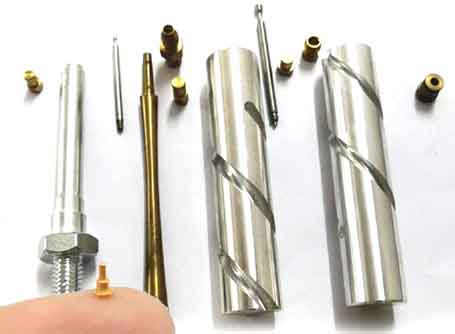微型數控加工技術採用全自動方法對金屬零件表面進行超精加工. 透過一種機械化學作用, 去除金屬件表面1-40μm的物質, 加工表面表面品質達到或優於ISO標準N1級. 微型CNC加工技術主要應用於超精密拋光及超精密光亮兩個領域. Ultra-precision polishing automates the traditional manual polishing process; The super-precision brightening generates a new surface topology.
An outstanding advantage of micro-CNC machining technology is that it can give new microstructures to the surface of the part. These microstructures can improve the adaptability of the part surface to specific application functions. Such as reducing friction and mechanical differences, improving wear resistance, and improving the deposition performance of the surface before and after coating.
一般來說, super-precision brightening can remove secondary micro-rough surfaces. The thickness of the secondary rough surface is between 0 和 20 μm, located between the peaks of the primary micro rough surface of the part surface. The super-finishing polishing removes the primary microscopic rough surface partially or entirely, and its value is between 10 和 40 μm. Of course this depends on the initial state of the part material surface.
The materials that can be processed by microfabrication technology so far are: Annealed and hardened steel, Copper and copper alloys, 鑄鐵, Inconel nickel alloy (nickel-based alloy), 鈦, Pretreatment (PVD, CVD, 電鍍) before and after surface hard coating treatment.

微型CNC加工零件技術
 English
English العربية
العربية 中文(漢字)
中文(漢字) Čeština
Čeština Dansk
Dansk Nederlands
Nederlands Suomi
Suomi Français
Français Deutsch
Deutsch Italiano
Italiano 日本語
日本語 ಕನ್ನಡ
ಕನ್ನಡ 한국어
한국어 Português
Português Русский
Русский Slovenčina
Slovenčina Español
Español Svenska
Svenska Türkçe
Türkçe

